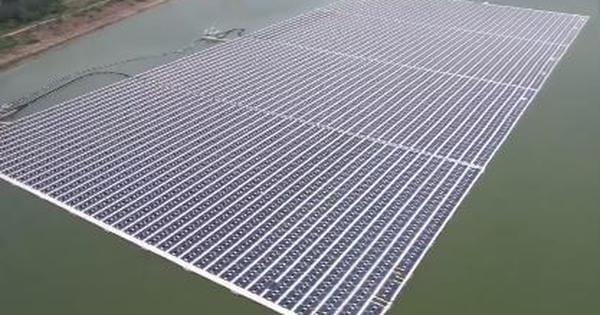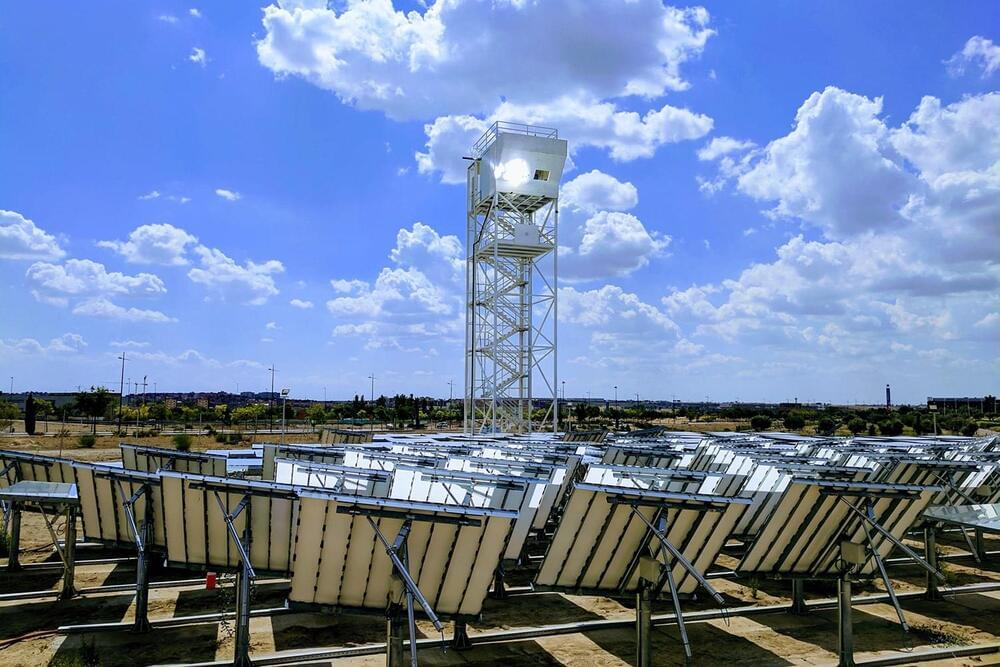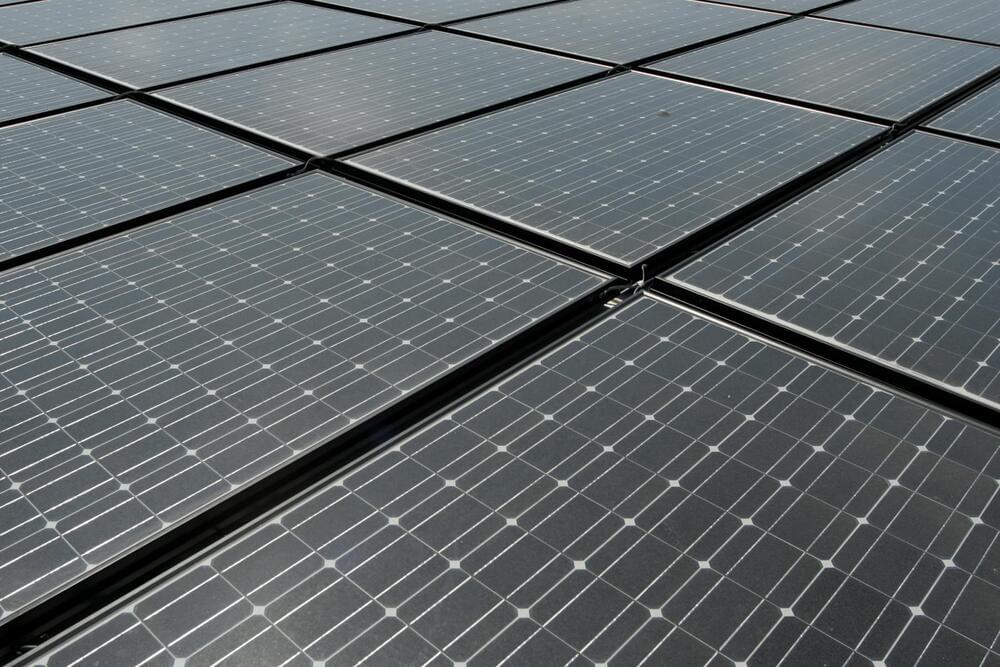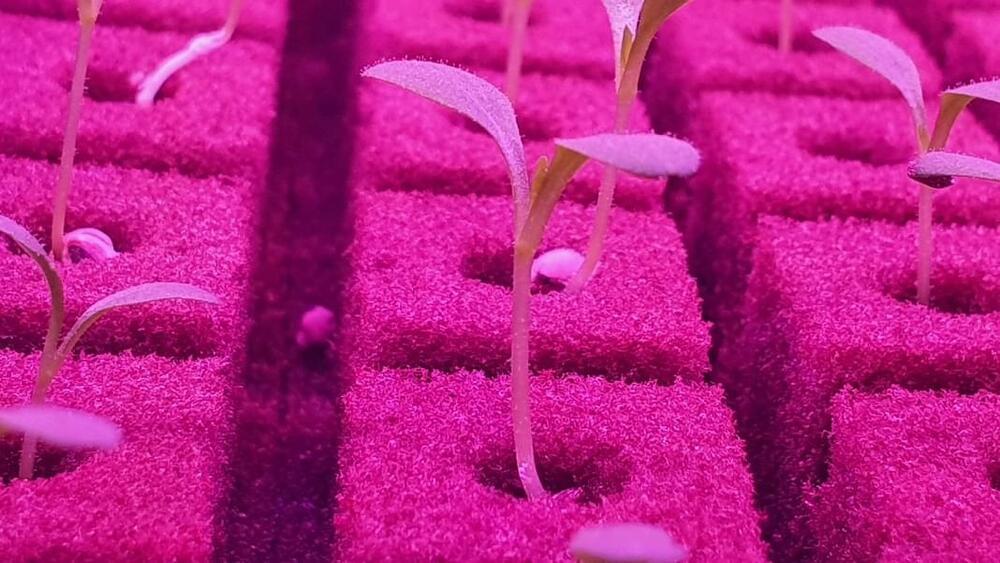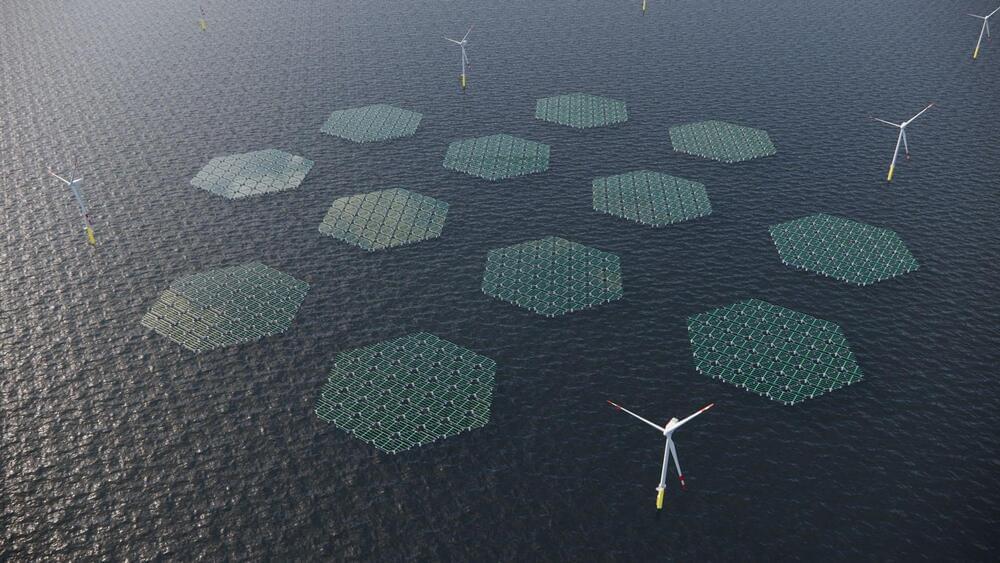Archive for the ‘solar power’ category: Page 49
Jul 24, 2022
All-in-one tower produces jet fuel using water, CO2, and sunlight
Posted by Wise Technology in categories: solar power, sustainability, transportation
Now, an international team of researchers has developed a tower that uses solar energy to produce a synthetic alternative to fossil-derived fuels like kerosene and diesel. The fuel production system uses water, carbon dioxide (CO2), and sunlight to produce aviation fuel. The team has implemented the system in the field, and the design could help the aviation industry become carbon neutral.
The solar-made kerosene is fully compatible with the existing aviation infrastructure for fuel storage, distribution, and end use in jet engines. It can also be blended with fossil-derived kerosene, says Aldo Steinfeld, a professor from ETH Zurich and the corresponding author of the paper.
The solar fuel production plant consists of 169 sun-tracking reflective panels that redirect and concentrate solar radiation into a solar reactor mounted on top of a tower. The concentrated solar energy then drives oxidation-reduction (redox) reaction cycles in the solar reactor, which contains a reticulated porous ceramic structure made of ceria. The ceria – which is not consumed but can be used over and over – convert water and CO2 injected into the reactor into syngas, a tailored mixture of hydrogen and carbon monoxide. Subsequently, syngas is sent into a gas-to-liquid converter, where it is finally processed into liquid hydrocarbon fuels that include kerosene and diesel.
Jul 24, 2022
Attaining better energy output
Posted by Wise Technology in categories: solar power, sustainability
Photovoltaics will play a key role in the future energy supply. Conventional solar cells based, for instance, on silicon, a well-known semiconductor material, are already highly developed and in widespread use. However, their production is complex because it requires a high vacuum with high temperatures. It can take up to five years for the energy used for production to be offset by operation.
This is where solar cells based on organic semiconductors can make a difference, as they can be printed in an energy-and cost-saving way. However, there are limitations to the energy conversion that need to be examined in more detail. A research team led by the Professorship of Optics and Photonics of Condensed Matter at Chemnitz University of Technology has investigated which main factors are decisive for the power limitation of organic solar cells.
The lead author of the study is Christopher Wöpke, research associate at the Professorship of Optics and Photonics of Condensed Matter at Chemnitz University of Technology. He was joined in the study by scientists from the universities of Bayreuth, Bern (CH), Durham (UK), Erlangen-Nuremberg and the Advanced Light Source Berkeley Lab (U.S.). Among other things, the team found that transport resistance in particular severely limits the performance of organic solar cells.
Jul 23, 2022
After setting ultra-endurance record, Army Zephyr drone keeps flying, whether it wants to or not
Posted by Genevieve Klien in categories: drones, robotics/AI, solar power, sustainability
The high-flying unmanned aerial vehicle has been above Arizona for more than a month, living on batteries, solar power and a prayer.
Jul 23, 2022
The World’s Biggest Vertical Farm Just Opened in Dubai
Posted by Quinn Sena in categories: business, chemistry, food, nanotechnology, solar power, sustainability
The Dubai facility has the capacity to produce over two million pounds of leafy greens annually, and will grow lettuces, arugula, mixed salad greens, and spinach.
ECO stands for Emirates Crop One; the vertical farm is a joint venture between Crop One Holdings (a Massachusetts-based vertical farming company) and Emirates Flight Catering (the catering business that serves Emirates Airlines). Greens from the vertical farm will be served onboard Emirates flights, and will also be sold in grocery stores in the UAE. Since they’re grown in a sterile environment without pesticides, herbicides, or chemicals, the greens come ready-to-eat and don’t need to be washed.
The UAE is in many ways an ideal location for vertical farming, if not a place where the technology may soon become essential. It gets an abundance of sunlight but doesn’t have much water to speak of (it was, fittingly, the field testing site for a nanoparticle technology that helps sandy soil retain water and nutrients); that means vertical farms could use energy from solar panels to grow food indoors using 95 percent less water than traditional agriculture.
Jul 22, 2022
Blue Earth Bags a Green Enterprise
Posted by Shubham Ghosh Roy in categories: solar power, sustainability
Nestled in deep woods in Jefferson, Kim and Rusty Fenn live off the grid in a home they built themselves out of wood from their property. They have two solar-power systems on their roof, one to generate electricity and one to heat their water.
They have all the appliances any home would want, and the solar power provides all their needs. They heat with a heat pump and a wood stove.
Kim, the creative one of the couple, had a pile of chicken grain bags, and decided to make a bag out of one. She then made a bunch for Christmas presents for friends and family. They were such a hit, that the couple decided to make them commercially.
Jul 22, 2022
A pilot project in the North Sea will develop floating solar panels that glide over waves ‘like a carpet’
Posted by Genevieve Klien in categories: solar power, sustainability
German energy firm RWE is to invest in a pilot project centered around the deployment of floating solar technology in the North Sea, as part of a wider collaboration focused on the development of “floating solar parks.”
Set to be installed in waters off Ostend, Belgium, the pilot, called Merganser, will have a capacity of 0.5 megawatt peak, or MWp. In a statement earlier this week, RWE said Merganser would be Dutch-Norwegian firm SolarDuck’s first offshore pilot.
RWE said Merganser would provide both itself and SolarDuck with “important first-hand experience in one of the most challenging offshore environments in the world.”
Jul 21, 2022
Have researchers found the best semiconductor of them all?
Posted by Saúl Morales Rodriguéz in categories: computing, solar power, sustainability
Silicon is one of the most abundant elements on Earth, and in its pure form the material has become the foundation of much of modern technology, from solar cells to computer chips. But silicon’s properties as a semiconductor are far from ideal.
For one thing, although silicon lets electrons whizz through its structure easily, it is much less accommodating to “holes”—electrons’ positively charged counterparts—and harnessing both is important for some kinds of chips. What’s more, silicon is not very good at conducting heat, which is why overheating issues and expensive cooling systems are common in computers.
Now, a team of researchers at MIT, the University of Houston, and other institutions has carried out experiments showing that a material known as cubic boron arsenide overcomes both of these limitations. It provides high mobility to both electrons and holes, and has excellent thermal conductivity. It is, the researchers say, the best semiconductor material ever found, and maybe the best possible one.
Jul 19, 2022
A Ukrainian entrepreneur built vertical solar panels for balconies
Posted by Gemechu Taye in categories: solar power, sustainability
Jul 19, 2022
World’s First Circumnavigation By Solar Powered Ship a Success
Posted by Quinn Sena in categories: solar power, sustainability
Circa 2012
At 2:12 PM local time today, the MS *Tûranor *entered Monaco’s Hercule Harbor, becoming the first ship to travel around the world using only solar power.
It’s the same harbor where the *Tûranor *set out from more than 19 months and 37,286 miles ago. Since then, the ship has made port in six continents, fended off pirates and broke four Guinness world records, including longest journey by solar powered boat and first circumnavigation by solar powered boat.
Continue reading “World’s First Circumnavigation By Solar Powered Ship a Success” »
